Climbing: Protection
FALCON GUIDES
An imprint of Rowman & Littlefield
Falcon, FalconGuides, Outfit Your Mind, and How to Climb are registered trademarks of Rowman & Littlefield.
Distributed by NATIONAL BOOK NETWORK
Copyright 2015 by Rowman & Littlefield
All rights reserved. No part of this book may be reproduced in any form or by any electronic or mechanical means, including information storage and retrieval systems, without written permission from the publisher, except by a reviewer who may quote passages in a review.
Photo on page 49 (bottom right) courtesy of Anthony DErcole
British Library Cataloguing in Publication Information available
Library of Congress Cataloging-in-Publication Data
Fitch, Nate.
Climbing : protection / Nate Fitch and Ron Funderburke.
pages cm
Distributed by NATIONAL BOOK NETWORKT.p. verso.
ISBN 978-1-4930-0983-1 (paperback) ISBN 978-1-4930-1507-8 (ebook) 1. Rock climbingSafety measures. 2. Rock climbingTraining. I. Funderburke, Ron. II. Title.
GV200.2.F55 2015
796.522'3dc23
2015017361
 The paper used in this publication meets the minimum requirements of American National Standard for Information SciencesPermanence of Paper for Printed Library Materials, ANSI/NISO Z39.48-1992.
The paper used in this publication meets the minimum requirements of American National Standard for Information SciencesPermanence of Paper for Printed Library Materials, ANSI/NISO Z39.48-1992.
Warning: Climbing is a dangerous sport. You can be seriously injured or die. Read the following before you use this book.
This is an instruction book about rock climbing, a sport that is inherently dangerous. Do not depend solely on information from this book for your personal safety. Your climbing safety depends on your own judgment based on competent instruction, experience, and a realistic assessment of your climbing ability.
The training advice given in this book is based on the authors opinions. Consult your physician before engaging in any part of the training program described by the authors.
There are no warranties, either expressed or implied, that this instruction book contains accurate and reliable information. There are no warranties as to fitness for a particular purpose or that this book is merchantable. Your use of this book indicates your assumption of the risk of death or serious injury as a result of climbings risks and is an acknowledgment of your own sole responsibility for your safety in climbing or in training for climbing.
Rowman & Littlefield and the authors assume no liability for accidents happening to, or injuries sustained by, readers who engage in the activities described in this book.
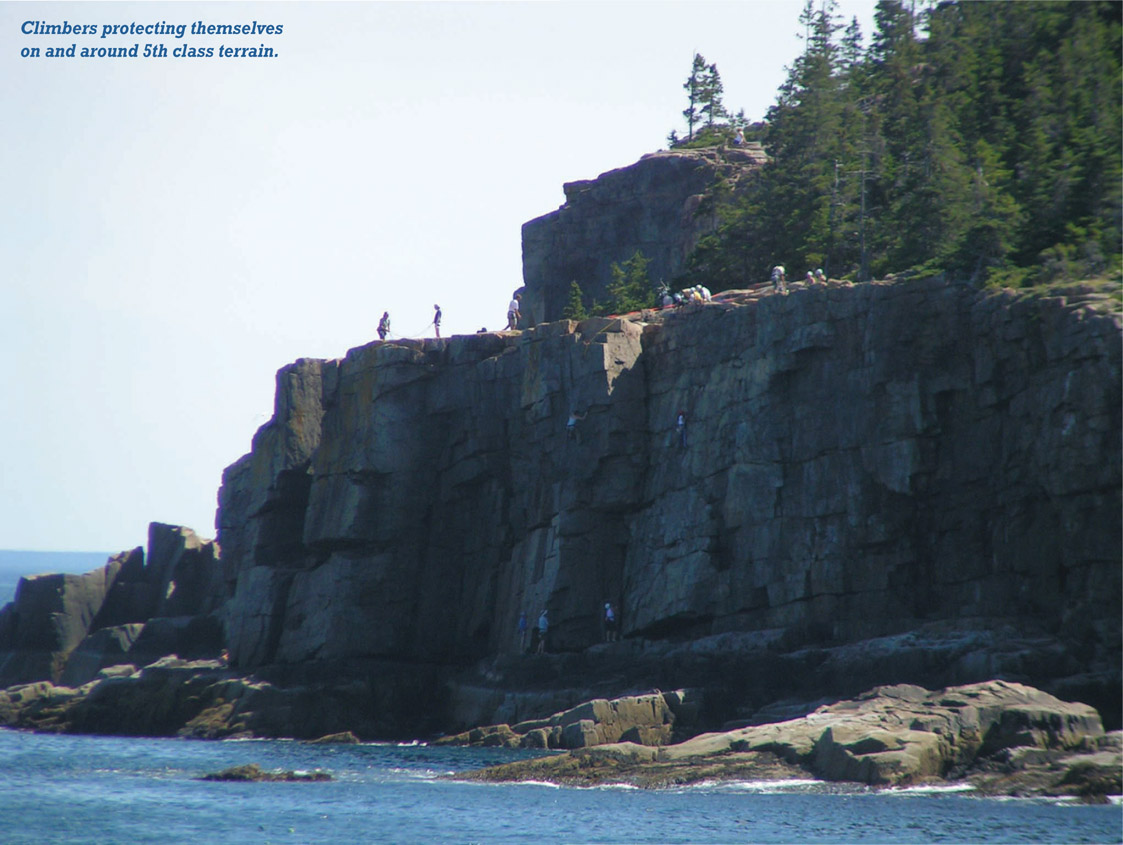
Introduction
R ock climbers venture out to cliffs and mountains for a wide variety of pursuits. Regardless of motivation (recreation, exploration, personal challenge, guiding, etc.) or climbing discipline (bouldering, top roping, sport climbing, traditional climbing, aid climbing, mountaineering, etc.), climbers need to manage risk on multiple levels. Managing risk in technical terrain (3rd5th class rock) and protecting themselves in this environment is a big part of what climbers do! They use climbing protection when approaching, climbing, and descending technical terrain using a wide variety of tools and methodologies. Climbing protection (aka pro, gear, kit, etc.) is a necessary companion for most climbers. This text aims to help climbers understand and utilize protection for a variety of applications when top roping, lead climbing, or working in and around 5th class terrain. It does not specifically deal with protection when short roping or mountaineering, but some of what is presented here will apply to these applications. The reader should have a basic understanding of how 5th class climbing works and possess a basic knowledge of common climbing equipment and knots. Climbing: Gym to Rock and Climbing: Knots (and other texts) can help you acquire this knowledge, as can a qualified climbing professional.
What is climbing protection? Definitions, examples, and in-depth discussions will be covered in this text. There are a multitude of directions this could lead us. In an effort to add clarity, we will organize protection into categories: natural, artificial (man-made removable equipment), and fixed (permanent exists on cliff). Each category contains numerous tools and methodologies to be explored. This exploration can seem at times overwhelming or anxiety producing. We hope the information and process here can inform, effectively educate, and ease any fears.
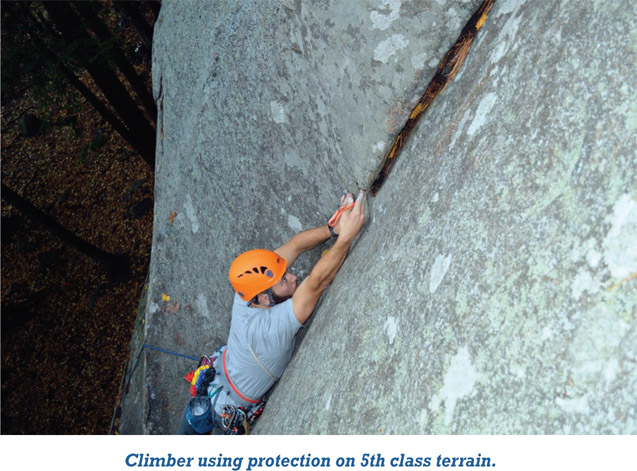
Three Categories of Protection
1. Natural
2. Artificial (man-made equipment)
3. Fixed (permanent)
Why to use climbing protection is hopefully straightforward to the climber. You want to manage risk, maximize your experience, and live to climb another day if a fall were to occur! There are cases where straightforwardness is lacking, and we hope to add some insights. The how, when, and where, or utilization and application of protection, is the bigger challenge for most climbers. Application is the whole process through which climbers learn, practice, and develop protection skills, possibly with a climbing mentor or professional instructor. One can always improve these skills through more information/education and practice, regardless of experience level.
The mission of this text is threefold:
1. To inform climbers about protection types and use (the what), and begin to understand the application: the how, when, and where for various types of climbing protection within its three broad categories (natural, artificial, and fixed). This text will focus on the major types and most commonly used forms of clean hammerless protection.
2. To help climbers understand how to utilize protection components by attaching to them for a variety of applications.
3. To help readers assess the quality of protection, increase risk management, and expand the terrain to be safely explored and enjoyed!
This is not an anchoring text. There are great resources already out there for this rock climbing skill. This text will enhance your anchoring skills, but it does not cover this topic in great detail.
The Language of Protection
Learning how to use climbing protection effectively is like learning a new language. In fact, protection use and all its aspects can be foreign to many. In a language-learning process you start with words and phrases and build into basic conversational skills. (Where is the bathroom?) Sometimes you can hear and understand a language before you can speak it fluently. In order to learn the language of protection, we will start with words and phrases (the what, why, and how). Being conversational (the when and where) in protection requires practice. You can and should practice these skills in situations where the consequences of mistakes are not so severe. It is recommended that you evaluate and/or receive feedback on your protection practice. A process for self and partner feedback will be outlined at the end of this text.
The final part of language fluency is to think in your new language. This thinking involves a deliberate and systemized protection thought process. This thought should happen naturally, instinctively, and in an involuntary manner, just like a heartbeat. Your mind should process a situation and determine whether there is a need for protection, a location for this protection, and how and what to utilize as protection. This is no small task, but rewarding on many levels to climbers. In chapter 2, we will explore the protection thought process to help climbers think about their protection throughout their time at the crag. The enjoyable flow of this process and the ability to divert more focus to climbing are two such rewards.


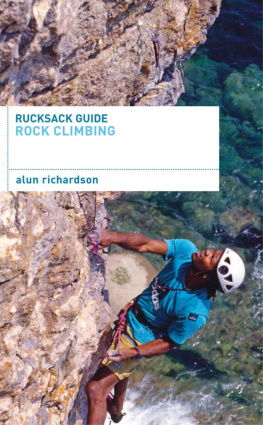
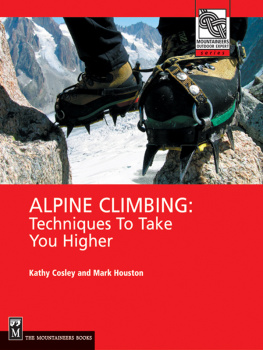
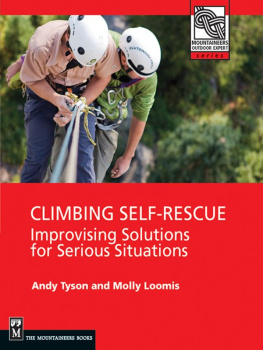

 The paper used in this publication meets the minimum requirements of American National Standard for Information SciencesPermanence of Paper for Printed Library Materials, ANSI/NISO Z39.48-1992.
The paper used in this publication meets the minimum requirements of American National Standard for Information SciencesPermanence of Paper for Printed Library Materials, ANSI/NISO Z39.48-1992.
